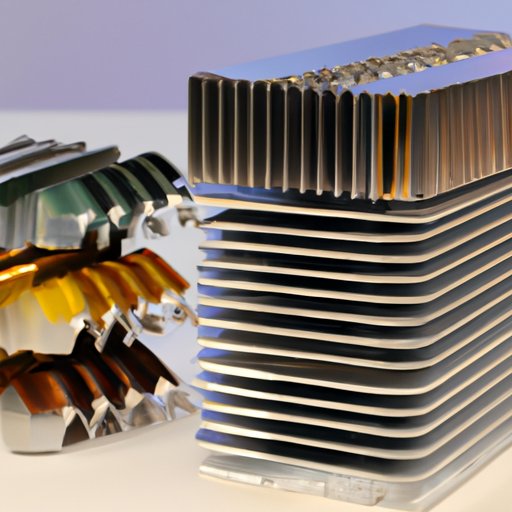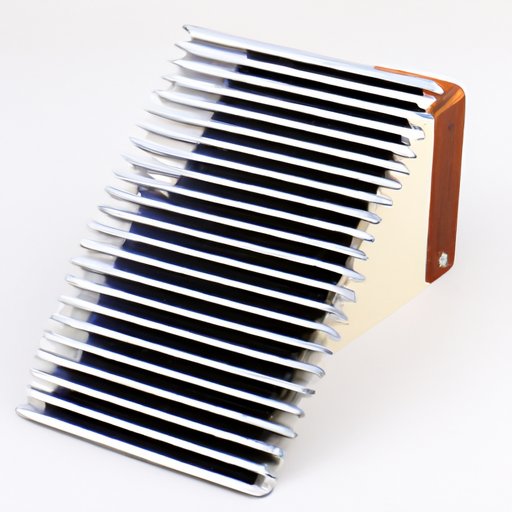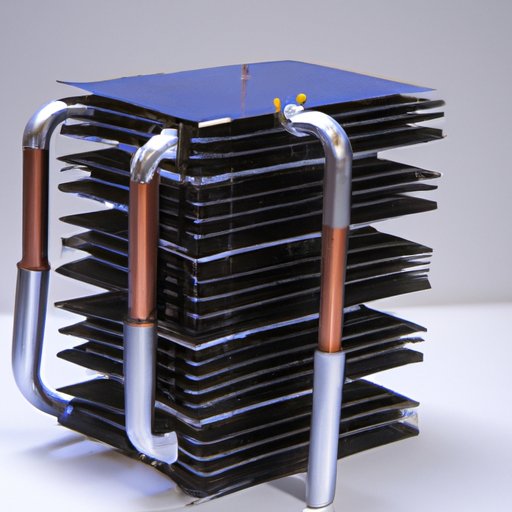Introduction
A heat sink is a device used to absorb and dissipate heat from an electronic device or system. It is designed to reduce the temperature of its components and increase the efficiency of the system. Heat sinks come in various sizes and shapes and are made up of several components such as fans, fins, and heat pipes.

Different Types of Heat Sinks
There are three main types of heat sinks: passive, active, and hybrid.
Passive Heat Sinks
A passive heat sink is a simple metal object with fins that dissipate heat away from its components. They are typically made of aluminum or copper and require no additional power source. Passive heat sinks are often used in applications where low noise levels are required, as they do not contain any moving parts.
Active Heat Sinks
An active heat sink is a more advanced type of heat sink that uses a fan to increase the rate of heat dissipation. These fans can be powered by either an external power source or an internal one. Active heat sinks are typically used for high-performance applications where additional cooling is needed.
Hybrid Heat Sinks
A hybrid heat sink combines the features of both passive and active heat sinks. It includes a combination of fins and fans that work together to provide increased cooling performance. Hybrid heat sinks are popular in applications where both noise levels and cooling performance are important.

Benefits of Using a Heat Sink
Using a heat sink offers several benefits, including improved performance, increased longevity, and reduced risk of overheating.
Improved Performance
By dissipating heat away from its components, a heat sink can improve the performance of an electronic device or system. This is especially true for high-performance applications where additional cooling is needed.
Increased Longevity
Heat sinks help to protect components from the damaging effects of heat. By dissipating heat away from its components, a heat sink can extend the life of an electronic device or system.
Reduced Risk of Overheating
Heat sinks can also reduce the risk of overheating, which can cause serious damage to an electronic device or system. By dissipating heat away from its components, a heat sink helps to keep the temperature of the system within safe limits.
Latest Technologies in Heat Sink Design
The latest technologies in heat sink design offer improved performance and greater efficiency. Some of these technologies include heat pipe technology, heat spreaders, and liquid cooling.
Heat Pipe Technology
Heat pipe technology is a type of heat transfer technology that uses a sealed tube filled with a working fluid. As the fluid evaporates, it absorbs heat from its components and transfers it away from them. This technology is often used in high-performance applications where additional cooling is needed.
Heat Spreaders
Heat spreaders are devices that are used to spread heat across a larger area. This helps to reduce the concentration of heat in any one area and improves overall cooling performance. Heat spreaders are often used in applications where increased cooling is needed.
Liquid Cooling
Liquid cooling is a type of cooling technology that uses a liquid such as water or oil to absorb and dissipate heat from its components. Liquid cooling is often used in high-performance applications where additional cooling is needed.

Common Questions about Heat Sinks
Heat sinks are an essential component of any electronic device or system. Here are some common questions about heat sinks.
What is the Difference Between a Heat Sink and a Fan?
A heat sink is a device used to absorb and dissipate heat from its components, while a fan is used to move air over the heat sink to increase the rate of heat dissipation. Fans are often used in conjunction with heat sinks to improve cooling performance.
How Do I Install a Heat Sink?
Installing a heat sink is relatively straightforward. First, you will need to attach the heat sink to the component using thermal compound or adhesive pads. Then, you will need to connect the fan to the heat sink and plug it into a power source. Finally, you will need to make sure that all of the connections are secure and that the fan is running properly.
What Is Thermal Compound?
Thermal compound is a substance used to fill the gaps between two surfaces, such as the heat sink and the component. This helps to improve the thermal conductivity of the connection and increases the efficiency of the heat sink.
Conclusion
Heat sinks are an essential component of any electronic device or system. They are designed to absorb and dissipate heat from its components and increase the efficiency of the system. There are several types of heat sinks, each with its own benefits. The latest technologies in heat sink design offer improved performance and greater efficiency. Understanding how a heat sink works and the different types available can help you choose the right one for your application.
(Note: Is this article not meeting your expectations? Do you have knowledge or insights to share? Unlock new opportunities and expand your reach by joining our authors team. Click Registration to join us and share your expertise with our readers.)
